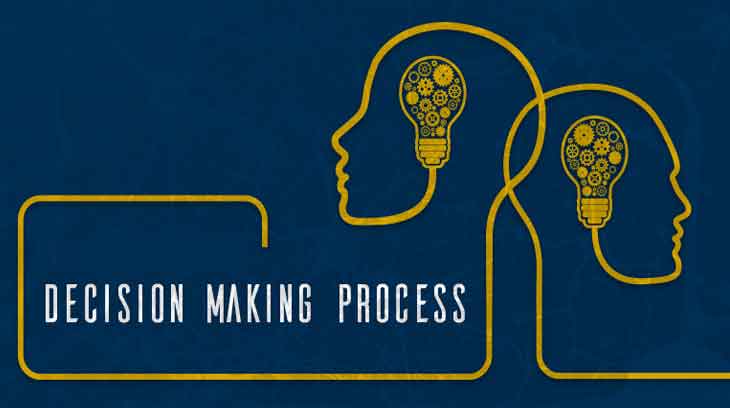Once the decision is made, it’s time to put it into action. Managers must evaluate the decision’s implementation to ensure that it is achieving positive results in line with organizational objectives.
This involves determining what information is needed and how to get it. It also involves identifying any potential barriers to progress.
1. Identifying the Problem
Identifying the problem is a critical step in making an effective decision. It ensures that a decision maker is focusing on the right issue and that all stakeholders understand what the problem is and how it will be solved.
This step may require gathering information from outside sources, such as doing market research or consulting with a specialist in the field. It also requires ensuring that all team members have an opportunity to share their perspectives in a safe space.
This is the process of finding different solutions to the problem identified in step 1. It is important to consider multiple alternatives at this stage because it increases the likelihood that one of them will satisfy the need identified in step 2. Review each alternative and evaluate its pros and cons.
2. Gathering Information

When a decision needs to be made, it is important to gather as much information as possible. This can involve gathering information from a number of different sources, including internal employees and external resources. It is also important to be open-minded when collecting this information, so that all possibilities for a solution are considered.
Effective decision makers also research and analyze the problem to identify possible solutions. They study the problem to understand why it exists and how it affects short and long term operations.
They also identify the impact of each option, and look at any potential obstacles that might arise from the implementation of a plan. The goal is to create a solution that will meet both the needs of the company and its customers.
3. Analyzing Options
During this step, you need to identify potential alternatives and thoroughly examine each. You may have to weigh the options against each other in terms of benefits, costs and risks. You should also take into consideration the organizational goals that can be achieved if a particular alternative is implemented.
The problem is that it’s impossible to gather and analyze all possible information; therefore, you have to set limitations for yourself. This is where the theory of bounded rationality comes into play.
Once you’ve weighed the pros and cons of each option, it’s time to decide on a solution. Typically, you’ll want to select the one that offers the most advantages with the fewest serious disadvantages. You’ll also need to make sure your team members agree with your decision and are committed to it.
4. Choosing a Solution
This step involves finding possible solutions to the problem identified in the previous step. This is often a difficult internal process, where the decision maker uses their imagination and additional information to construct and compare alternatives. They might use a rational decision making model that lists advantages and disadvantages for each option, or they might use an intuitive model where the choice comes from within and is guided by their intuition.
Once the group has reviewed their options, they begin evaluating them by considering how the solution will impact the company in the short- and long-term, and whether or not it can achieve its objectives with minimal risk. It is also important to consider what happens if the solution fails to meet its goals.
5. Implementing the Solution
Once you’ve chosen a solution, it’s important to implement it in your business operations. You should also monitor the results and evaluate the impact of your decision.
This step should take the urgency of the issue into account. For example, some issues may allow for lengthier decision-making processes while others require a quick turnaround time.
Summary:
Having a systematic process for making decisions can help prevent biases and blind spots from affecting the outcome of a decision. Additionally, implementing an analytical process can help individuals identify the right data for a situation, minimizing the possibility that they’ll choose the wrong data. However, even with a thorough analysis and process, mistakes can still happen. This is why it’s essential to have a plan in place for measuring the results of your decisions and taking corrective action when necessary.


